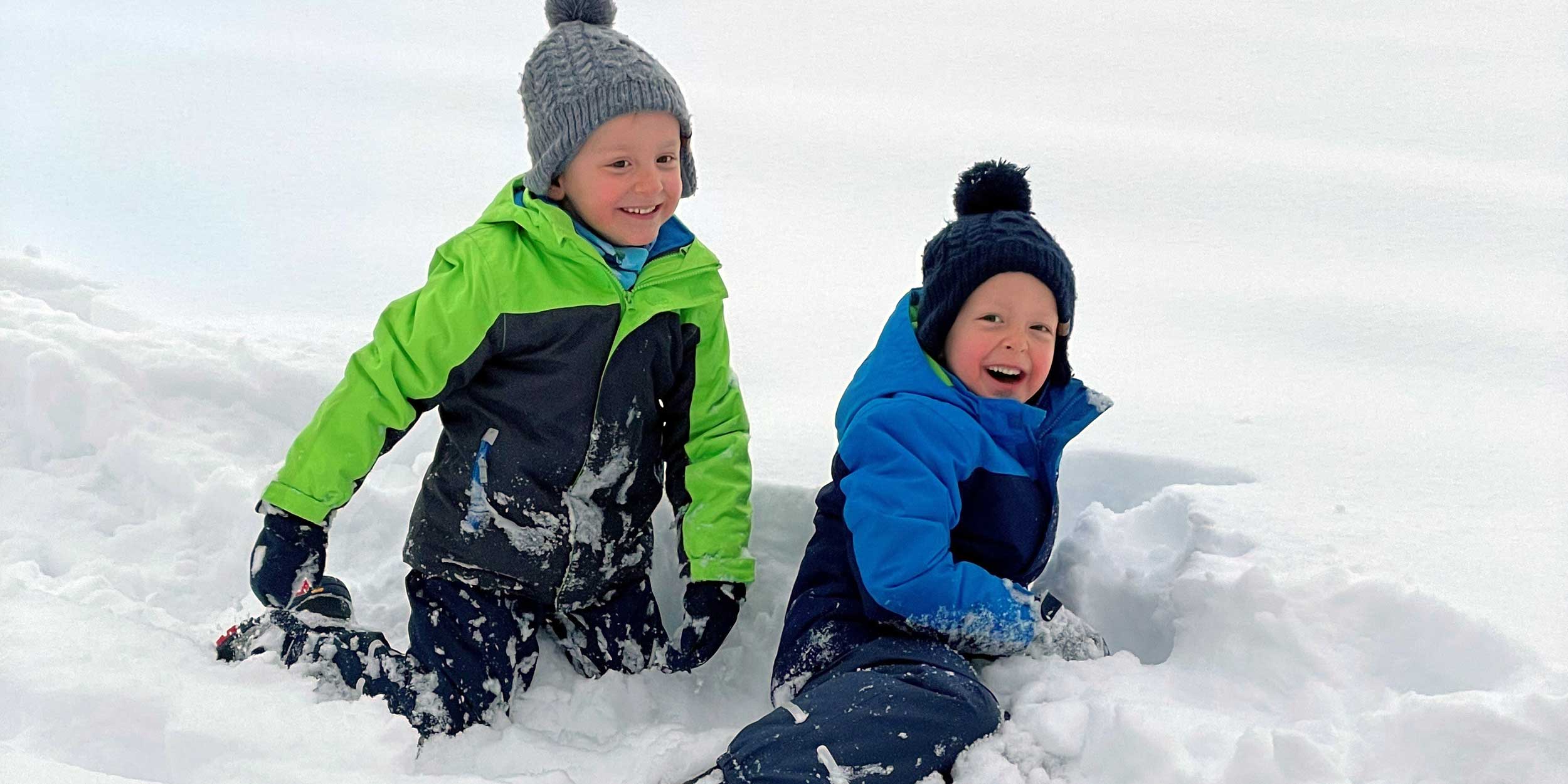Big snows, freezing temperatures, major storms – what’s up with the weather?
SustainabilityArticleJanuary 21, 2021
Freak snow in Europe, extreme cold in North America after the hottest year on record for the planet. Does climate change affect daily weather? Or are isolated events just quirks of nature?
Switzerland is a snow country. But seeing skiers in downtown Zurich recently was still a surreal sight. With record-setting snow falling in a short time, when city buses floundered, some urban commuters took to skis as the best way to get to work.
Heavy snow can be beautiful, even fun. But extreme weather events including major snowfalls in Switzerland in January 2021 that disrupted transport, cut power, downed trees, and sent vehicles skidding posed real risks. Even when it’s not happening on our doorsteps, around the world we seem to see headlines almost daily about strange weather, including record cold temps in some parts of the U.S. that made October 2020 feel like January. That followed dry conditions that fueled forest fires from California to Washington State. In November 2020 in the Russian city of Vladivostok, unusual ice storms left 150,000 temporarily without water or electricity. And, in early January 2021, Spain reeled from the impact of some of the heaviest snowfalls in decades.
Experts at Zurich Insurance Group, the global insurer, tend to look at the bigger picture, even when snow is forcing them to shovel off their own driveways. While it’s almost impossible to draw conclusions about long-term trends from a few freak weather events, strange as it sounds, global warming might also cause more snow to fall sometimes, even as winters generally tend to be getting warmer, and snow seems on the whole to be less common.
“Climate change is tied to more carbon dioxide and other gases in the atmosphere, which in turn means more energy under which physics can operate. That leads to more extremes and variability in both directions – very hot as well as very cold or snowy days,” according to Michael Szönyi, Zurich’s Flood Resilience Program Lead, whose job includes reviewing extreme weather events. While weather and climate are different things, he says “we can have snowstorms despite the overall situation resulting in wetter, warmer winters and drier, hotter summers.”
This phenomenon is supported by observations from the U.S. National Oceanic and Atmospheric Administration (NOAA). It suggests that not only are severe snowstorms possible in a warming climate, but they may even be more likely. One thing getting close study is the so-called polar vortex, a system of low pressure that, when it is stable, keeps artic air at higher latitudes. When the system destabilizes, extremely cold polar air may move to lower latitudes. According to experts at U.S. space authorities NASA who study satellite data, in 2020, artic sea ice that normally covers most of the Arctic ocean shrank to the second-lowest surface area since recordkeeping began. Whether this plays a role in how the polar vortex behaves requires more study, but could be a factor as we look for reasons behind recent weather extremes.

Increasingly extreme weather, in any case, offers apparent contradictions that call for scientific explanations. Why are there, for example, more droughts, but also more intense rainfall, or record snowfall, and warming? “At first glance, a record snowfall seems inconsistent with a warming climate,” says Iwan Stalder, Head of Group Accumulation Management at Zurich. “But in a warmer world with more moisture in the atmosphere, more extreme precipitation events have to be expected. In areas where snowfall conditions are favorable, this may include more heavy snowstorms. This contrasts with a trend toward generally decreasing snow cover overall, as can be seen, for example, in Switzerland over the past 50 years,” he adds.
In Switzerland, things do appear to be changing as global temperatures rise. The Swiss weather service recently noted on its website (amid warnings to motorists to drive with caution on icy roads) that 2020 was the second-hottest year on record for the planet, and that the “five warmest years in Europe were recorded during the last 10 years.” Glaciers, too, which store water, are melting, which could have drastic implications for Switzerland and other Alpine countries.
Thus, it is important to separate ‘discrete weather events’ – meaning one or two days of heavy snow, for example – and variations in long-term patterns that might be attributed to climate change. These long-term alterations might be harder for us as individuals to detect, but over time, on a cumulative basis, they can be even more devastating than the occasional weather anomaly. Long-term climate change can affect food crops, increase the risk of severe storms and floods, contribute to the dangers of wildfires, and raise havoc with other things, too.
“Organizations should be treating climate change as a priority,” according to Amar Rahman, Global Practice Leader Natural Hazards & Climate Change, Zurich Risk Engineering, who spoke on a recent podcast available on this website about the impacts of climate change. “We’re seeing this every day in the news, where wildfires, floods, droughts and so on, are impacting every corner of the globe.” The impact such events can have is amplified and may cascade to affect seemingly unrelated, possibly unpredictable things. For example, Rahman notes, severe weather makes it harder to produce and distribute COVID-19 vaccines.
As an insurer, we are looking for ways to mitigate climate change and its impacts, which can literally affect what is happening in our own backyards. We know that the risks and knock-on effects can also have far-reaching implications for people, communities and society. We believe there are things we can do now to address global warming, including within our own business, and by helping customers to reduce their impact on the climate, while mitigating how the changes might affect them.
So, as you sit and admire the snow piling up outside (or enjoy your beach property that may be more exposed to storms as a result of global warming), remember that climate change is like a tax that everyone has to pay. It may eventually lead to more, and more severe, hurricanes or typhoons, storms, droughts, that can have far-reaching impacts and costs, both monetary and human. It could result in record snowstorms or droughts. It could even be coming soon to an urban center near you.



